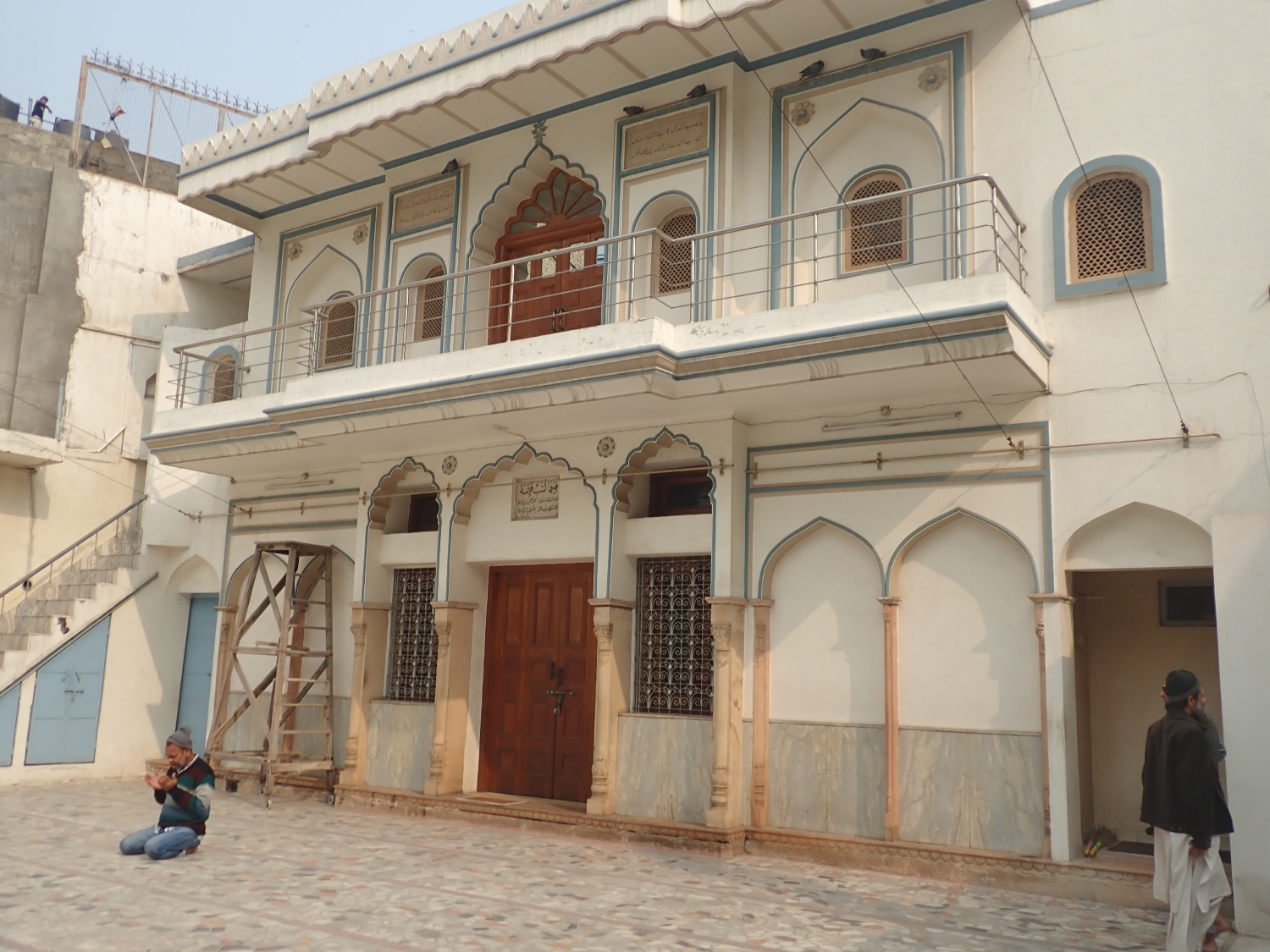
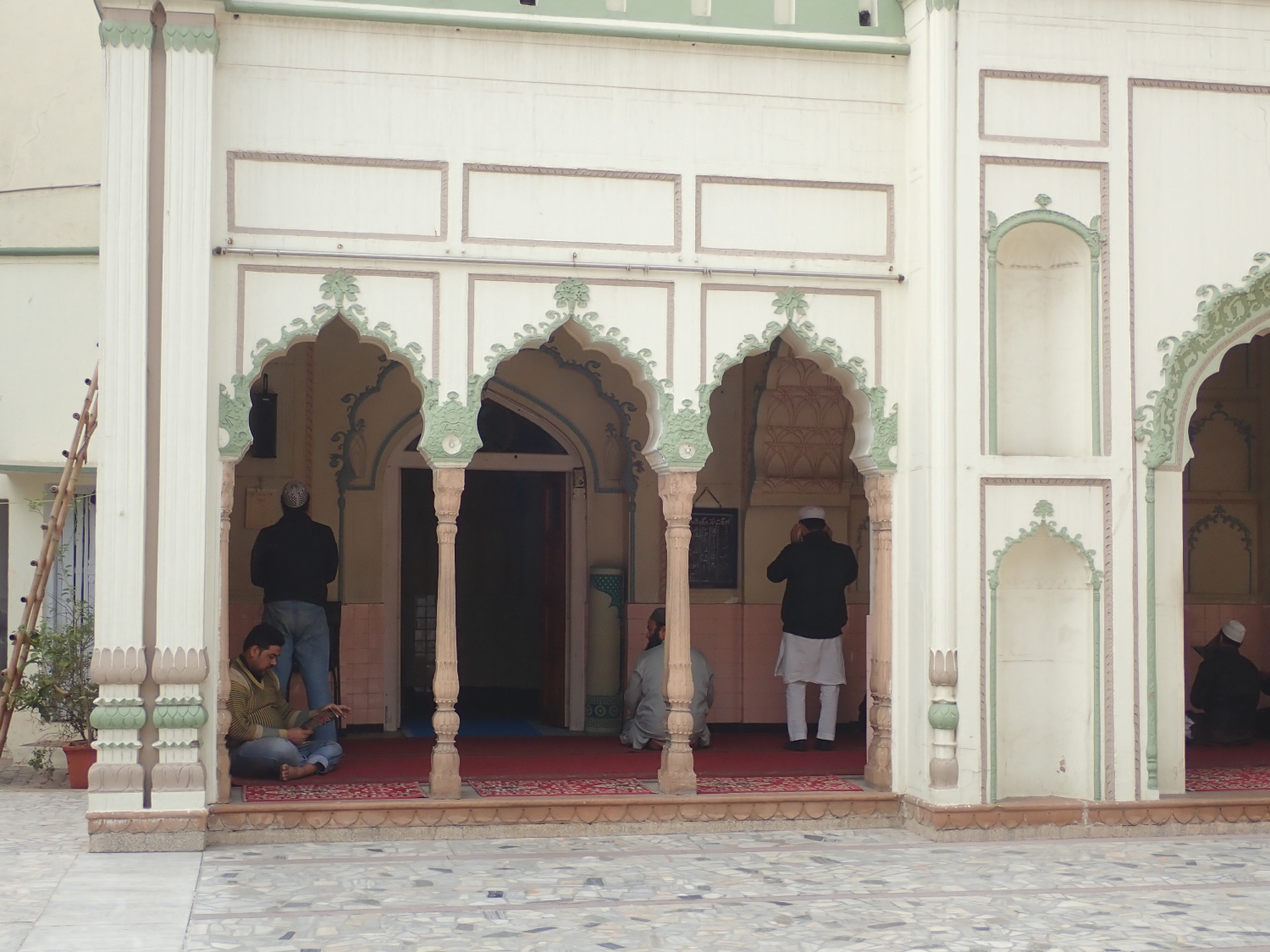
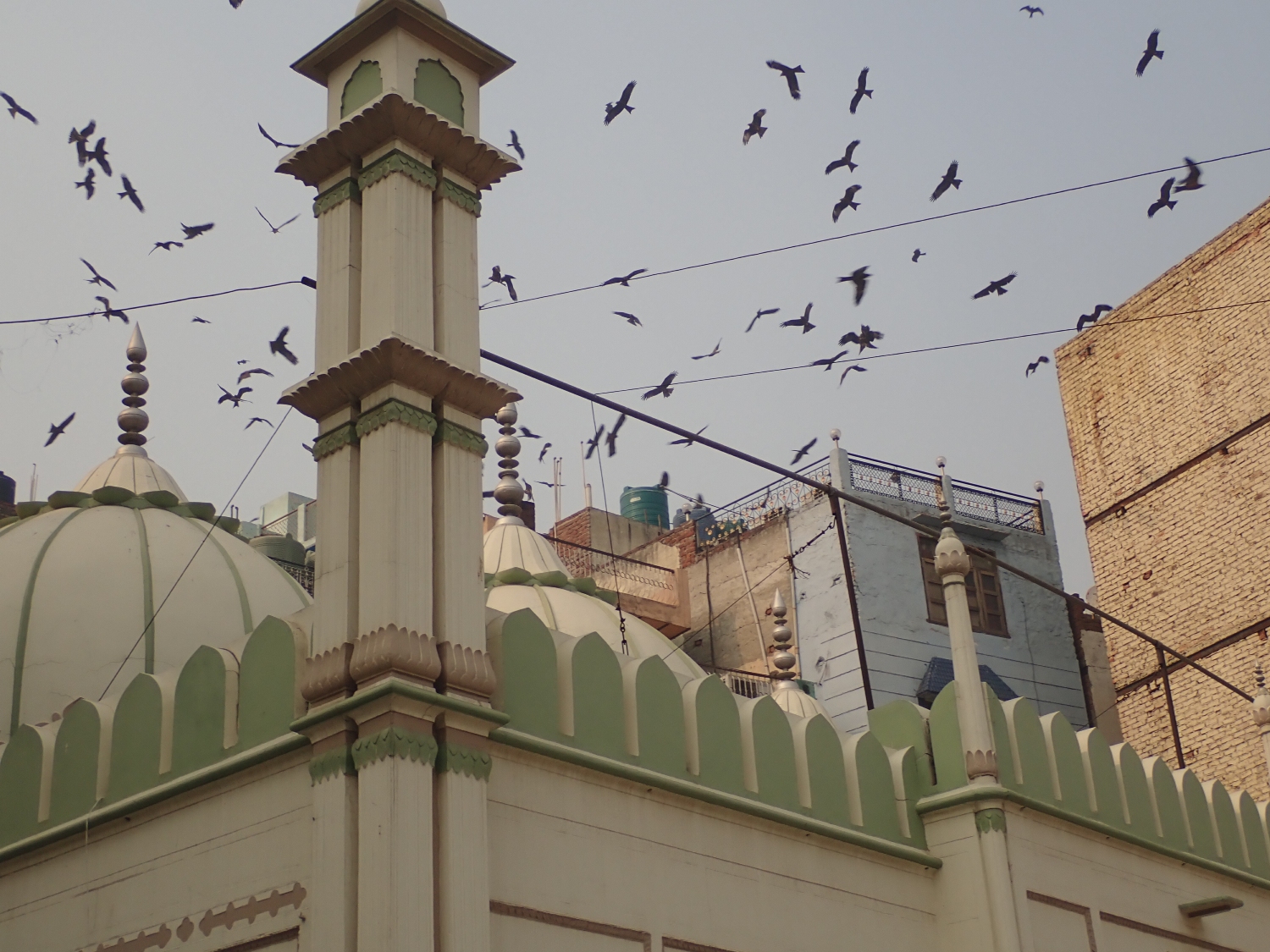
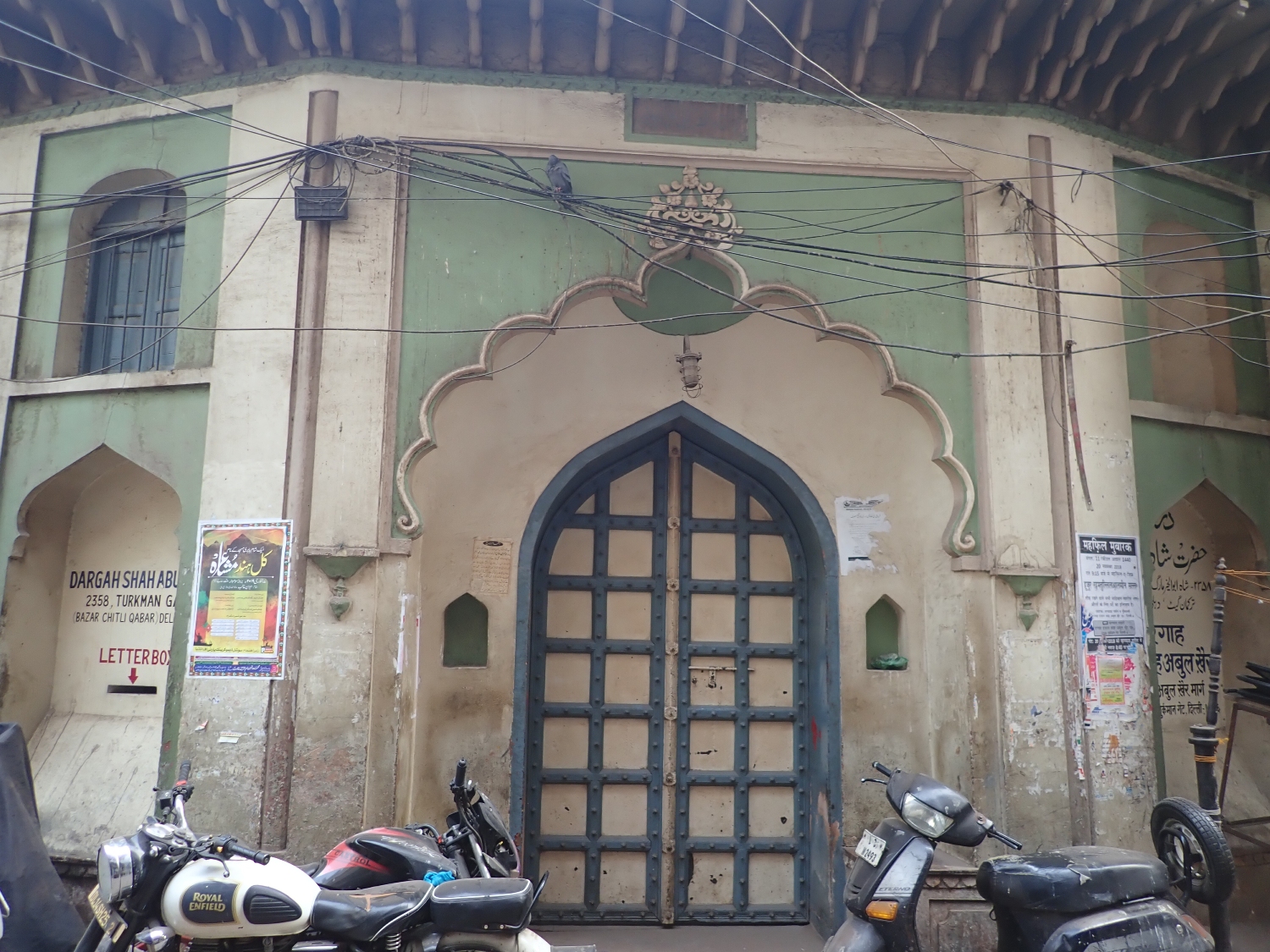
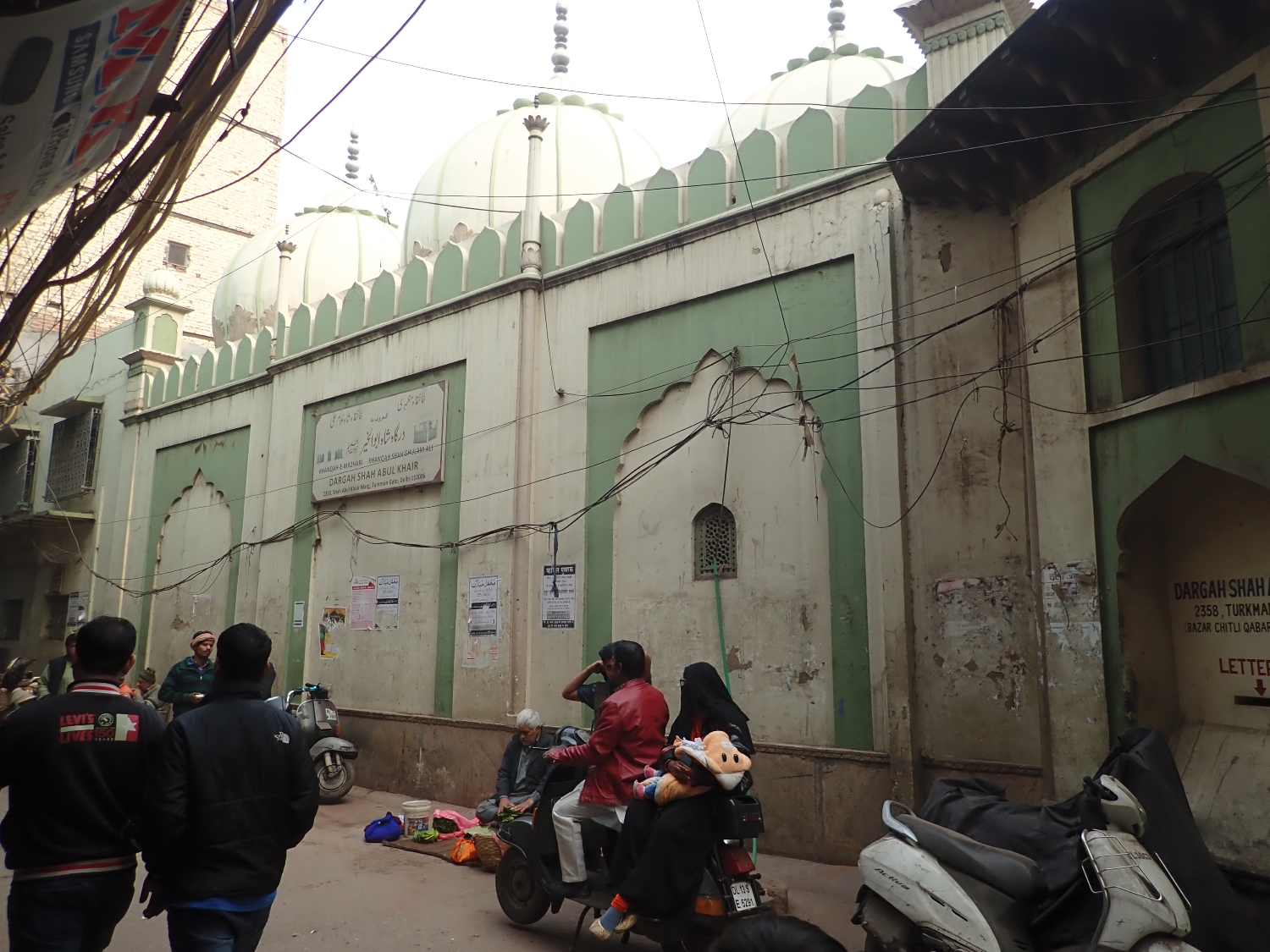
Shah Ghulam Ali, a notable figure, was a disciple of the saint known as Maghar-i-Jaryanan, who was buried at the site in 1781 A.D., with Ghulam Ali himself interred there in 1824 A.D. Architectural Features This mosque exemplifies the Indo-Persian architectural style, with several distinguishing features: Domes: The structure is topped with three prominent bulbous domes, adorned with ribbed patterns and crowned by inverted lotus crestings, typical of Mughal and Indo-Persian influences. Facade and Minarets: The arched facade is accented by small minarets positioned at each corner of the mosque, adding to its grandeur. Parapet and Niches: A battlemented parapet runs along the top of the mosque, enhancing its fort-like appearance. Alcoved niches are also integrated into the frontal wall, adding depth and character. Materials Used The mosque’s construction incorporates: Walls: Brick walls coated with cement plaster. Flooring: Stone is used for the flooring, ensuring durability and a cool surface for prayer. Facade and Cornice: Red sandstone enhances the facade and cornice, lending the structure a vibrant and dignified aesthetic. This blend of materials and intricate design elements reflects the cultural synthesis of Indo-Persian architecture, creating a lasting heritage site with both spiritual and architectural significance.